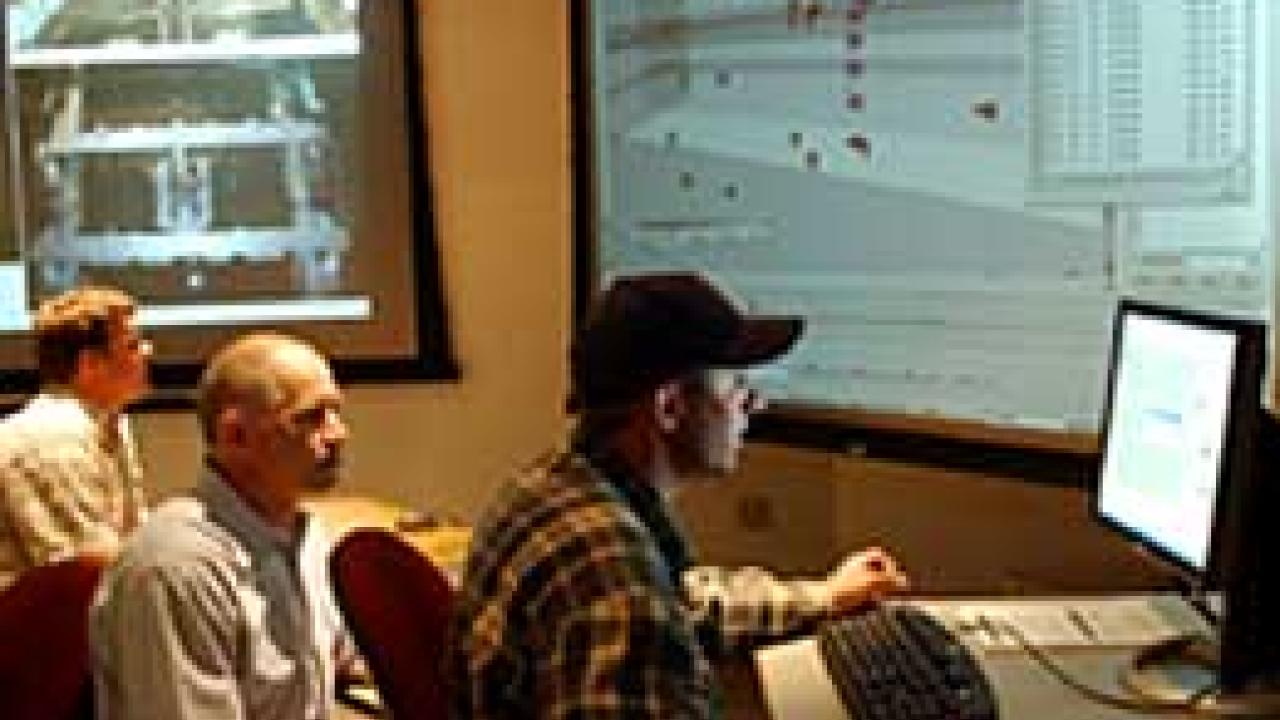The University of California, Davis', Center for Geotechnical Modeling joins a national effort in earthquake simulation with the launch of the George E. Brown Jr. Network for Earthquake Engineering Simulation (NEES) today, Nov. 15.
Created with $82 million from the National Science Foundation, NEES includes 15 equipment sites, including centrifuges, large-scale shake tables and a tsunami-simulation wave basin, distributed across 10 states and linked via high-speed Internet2 grid connections. Through the network, researchers can share equipment and participate in experiments either physically or virtually.
"The College of Engineering is looking forward to the appreciable contributions we can make to the NEES effort," said Enrique J. Lavernia, dean of engineering at UC Davis. "Our long tradition of collaborative and interdisciplinary research, in combination with recent dramatic growth in faculty and students, provides an ideal platform for this new approach to work on complex problems that are relevant to our nation."
$5.1 million of NEES funding has paid for upgrades and new equipment at the UC Davis Center for Geotechnical Modeling, based around a 30-foot radius centrifuge, the largest of its type in the U.S. and one of the largest in the world. The forces created by the centrifuge allow researchers to increase the stresses in scale models of soils and structures, simulating pressures deep in the ground. The platform at the end of the centrifuge arm is equipped with a shaking table to simulate earthquake motion in the models built on it.
Researchers collect data through video cameras, robotic inspection tools, and arrays of wired and wireless sensors buried in the model. The machine has been used for studying problems such as why some soils liquefy in earthquakes and methods to improve seismic design of building and bridge foundations.
The NSF grant awarded in 2000 funded a number of upgrades to the centrifuge, including: raising its maximum force from 40 g to 75 g; installing a new shaking table capable of vertical as well as horizontal movement; increasing the number of sensors used and the amount of data that can be collected in an experiment; and adding a robot that can work on the platform in flight. Researchers from the Georgia Institute of Technology helped develop in-flight geophysical testing tools for the machine as part of the NSF program.
To accommodate the upgraded equipment, and the remote researchers who will be attracted to it, UC Davis also constructed a new building to house the center.
"The upgrades allow us to collect much more data and much higher resolution information from experiments. We can carry out more accurate, more realistic simulations of construction and loading sequences," said Bruce Kutter, professor of civil and environmental engineering at UC Davis and director of the Center for Geotechnical Modeling.
The equipment will enable engineers to get a much clearer understanding of the effects of ground shaking on buildings, bridges, and other civil infrastructure, he said.
Remote collaboration tools added through the NEES program allow researchers across the country to participate in experiments and share data generated by the centrifuge. UC Davis engineers could also work on experiments at the other facilities in the network.
The center represents a collaboration between many groups of engineers and computer scientists on campus. Earthquake researchers from the Department of Civil and Environmental Engineering use the machine for experiments. Robotics engineers from the Advanced Highway Maintenance and Construction Technology center at the Department of Mechanical and Aeronautical Engineering are collaborating on the design and construction of the robot. Computer scientists from the Institute for Data Analysis and Visualization are developing methods to handle and visualize the large amounts of data collected during experiments. Electrical engineers are working on high-performance networking.
Other institutions with NEES equipment sites are: the University at Buffalo, State University of New York; University of Nevada, Reno; UC Berkeley; UC San Diego; UC Santa Barbara; UCLA; Rensselaer Polytechnic Institute; Oregon State University; University of Colorado, Boulder; University of Minnesota, Twin Cities; Lehigh University; University of Illinois, Urbana-Champaign; Cornell University; University of Texas, Austin; and Brigham Young University.
The national NEES project is named in memory of the late George E. Brown Jr., former chairman of the House Science Committee and a champion of engineering and science in Congress for more than 30 years. Representative Brown authored the legislation creating the interagency National Earthquake Hazards Reduction Program in 1977, which in turn, led to the creation of the George E. Brown Jr. Network for Earthquake Engineering Simulation.
Media Resources
Andy Fell, Research news (emphasis: biological and physical sciences, and engineering), 530-752-4533, ahfell@ucdavis.edu
Bruce Kutter, Center for Geotechnical Modeling, (530) 752-7929, blkutter@ucdavis.edu
Josh Chamot, National Science Foundation, (703) 292-7730, jchamot@nsf.gov
